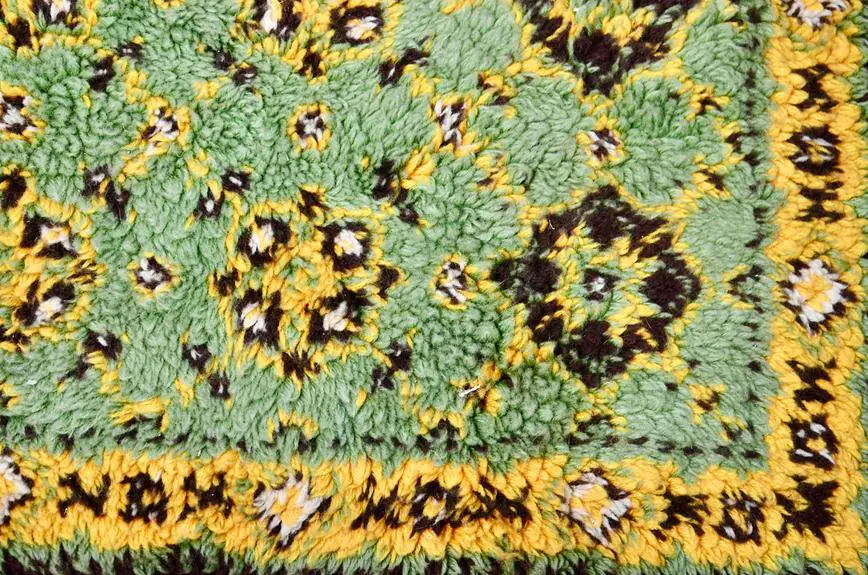When you think about patterns, madras plaid and gingham each tell their own distinct story. You'll notice that madras plaid favors a lively array of colors and intricate designs, while gingham sticks to its simple, uniform checks. This contrast raises questions about their origins and the cultural significance behind each one. It's interesting to explore how these designs have evolved in fashion and home décor. But have you ever considered how these unique characteristics influence your own personal style choices?
Table of Contents
Historical Origins of Each Pattern
Have you ever wondered where Madras plaid and gingham came from? Both patterns hold rich histories that reflect their cultural origins.
Madras plaid traces its roots to the Indian city of Madras (now Chennai), where the vibrant, handwoven cotton fabric first gained popularity in the 17th century. British colonial traders embraced it, bringing the textiles back to Europe, where the colorful checks and patterns quickly captivated fashion enthusiasts.
On the other hand, gingham originated in France during the 17th century as a cotton fabric with a distinctive checkered pattern. The name derives from the Malaysian word “genggang,” which means “striped.” Initially, it was striped fabric before evolving into the check designs we recognize today.
Gingham gained traction in America by the 19th century, particularly as a popular fabric for dresses and tablecloths, thanks to its affordability and versatility.
Design Characteristics and Complexity
When it comes to design characteristics, Madras plaid and gingham each possess distinct elements that reflect their unique identities. You'll find that while both patterns incorporate checks and stripes, they do so in markedly different ways.
Complexity of Patterns: Madras plaid often showcases intricate combinations of multiple colors and faded edges, resulting in a more chaotic, layered look. In contrast, gingham features simple, evenly spaced checks, giving it a more uniform and orderly appearance.
Scale and Size: The scale of plaid can vary significantly, sometimes featuring large blocks, while gingham patterns usually maintain a consistent, smaller scale. This allows for greater versatility in fashion and decor for gingham, but Madras plaid tends to stand out more boldly.
Texture and Fabric: Madras is typically made of lightweight cotton, which contributes to a breezy, casual vibe, ideal for summer wear. Gingham, on the other hand, is often found in a variety of fabrics, including heavier cotton blends, making it suitable for year-round use.
Color Palettes and Compositions
Madras plaid is renowned for its vibrant, bold color combinations, often blending hues like pink, blue, green, and yellow to create a lively, tropical aesthetic.
In contrast, gingham leans towards a more subdued palette with classic combinations such as white and navy or red and white that evoke a timeless charm. When you explore these two patterns further, you'll notice how each color palette influences their overall feel and suitability for different occasions.
Madras plaid's eye-catching colors make it perfect for casual wear, outdoor gatherings, and summer events. You can easily spot it in beachwear or picnic blankets, where its cheery vibe enhances the fun atmosphere.
On the other hand, gingham provides a more grounded appearance, often found in classic shirts or home décor. Its ability to complement a rustic or vintage aesthetic makes it a favorite for casual dining or picnics, giving a sense of familiarity and comfort.
Ultimately, your choice between these two patterns will hinge on the mood or atmosphere you want to create.
Whether you go for the lively flair of madras plaid or the classic charm of gingham, both colors can elevate your style in unique ways.
Applications in Fashion Trends
When you look at recent fashion runways, you'll notice a resurgence of Madras plaid and gingham patterns making bold statements.
These styles aren't just for high fashion; they've also found their way into everyday casual outfits.
You can easily incorporate these prints into your wardrobe for a fresh, vibrant look.
Recent Fashion Runways
Fashion runways are showcasing Madras plaid and gingham in striking ways that reflect contemporary style and bold aesthetics. As a fashion enthusiast, you'll notice how these patterns are being reinterpreted in modern silhouettes and unique color combinations. Designers are experimenting with these classic motifs, pushing the boundaries of traditional styling.
Here are three ways Madras plaid and gingham are making waves on recent runways:
- Mixed Patterns: Designers are cleverly combining Madras plaid and gingham with other prints, creating vibrant outfits that catch the eye. This mix enhances visual interest and allows you to express your personal style.
- Layering Techniques: Many collections feature layered outfits that incorporate both patterns in the same look. You might spot a gingham shirt under a Madras plaid jacket, showcasing a playful juxtaposition that feels fresh and dynamic.
- Tailoring Innovations: Contemporary designers are using Madras plaid and gingham in unexpected tailoring, such as structured blazers or chic skirts. These pieces elevate traditional prints, offering a polished yet relaxed appeal for the modern wardrobe.
With these trends, embracing Madras plaid and gingham is easy and exciting!
Everyday Casual Outfits
Casual outfits effortlessly incorporate Madras plaid and gingham, making everyday style both comfortable and chic. You can easily mix and match these patterns for a laid-back look that still makes a statement.
For instance, a Madras plaid shirt paired with your favorite denim jeans gives off a relaxed vibe that's perfect for brunch or casual outings. Alternatively, consider a gingham dress for a fun, flirty option. You can dress it up with a denim jacket and slip-on sneakers, ideal for running errands or meeting friends.
If you prefer a more layered style, try a gingham button-up underneath a cozy Madras plaid sweater. This combination not only provides warmth but also adds depth to your outfit.
Accessorizing is key. A simple pair of hoop earrings or a crossbody bag can elevate your look without overpowering the patterns. These styles embrace versatility, so switch between pieces to keep your wardrobe fresh.
Don't be afraid to experiment with colors and textures, as both Madras plaid and gingham lend themselves well to countless combinations. With these patterns in your arsenal, you'll be ready for anything your day throws at you.
Home Décor and Styling Uses
Incorporating Madras plaid or gingham into your home décor can instantly elevate your space with a vibrant, textured aesthetic. Both patterns bring a fresh, lively element, but their unique qualities can transform different areas of your home in various ways.
Here are three creative ways to style these patterns:
- Cushions and Throws: Add pillows or throws in Madras plaid or gingham to your living room. These textiles provide comfort and a pop of color, making your space inviting and stylish.
- Table Linens: Use Madras plaid or gingham tablecloths, napkins, and runners for your dining table. This introduces a casual yet chic vibe, perfect for hosting dinner parties or family gatherings.
- Wall Art or Décor Accents: Frame fabric swatches or hang artwork featuring these patterns. This allows you to incorporate the aesthetic without overwhelming the space, inviting the eye to appreciate the design.
You'll find that whether you choose Madras plaid for its colorful charm or gingham for a classic touch, both patterns enhance the overall feel of your home, making it a true reflection of your personality.
Cultural Significance and Heritage
Madras plaid and gingham not only enhance your home décor but also carry rich cultural histories that reflect the traditions and craftsmanship of their respective origins.
When you choose madras plaid, you're embracing a fabric that has roots in India, where skilled artisans weave vibrant textiles influenced by local culture, trade, and history. The patterns often showcase a blend of colors and styles that can tell stories of generations, offering a glimpse into the region's artistic heritage.
On the other hand, gingham, with its classic checkered design, has a lineage tracing back to 17th-century France. You'll find its charm in the fabric's simple yet striking appearance, often associated with rustic settings and American country living. This fabric embodies nostalgia and simplicity, evoking images of traditional picnics and family gatherings.
Both patterns serve as more than mere aesthetics—they symbolize community, craftsmanship, and cultural storytelling.
Frequently Asked Questions
Can Madras Plaid and Gingham Be Used Interchangeably in Designs?
You can use Madras plaid and gingham interchangeably in designs, but consider the overall vibe you want. Madras offers a colorful, casual feel, while gingham tends to be more classic and structured. Choose accordingly!
How Do the Fabric Textures of Madras Plaid and Gingham Differ?
Madras plaid feels lightweight and breezy, perfect for warm weather. Gingham's texture is typically tighter and sturdier, making it versatile for various outfits. You'll notice these differences in how each fabric drapes and conforms.
What Are Popular Modern Brands Featuring Madras Plaid or Gingham?
You'll find brands like J.Crew and Ralph Lauren showcasing madras plaid and gingham in their collections. For casual wear, look at Tommy Hilfiger and L.L. Bean; they bring these patterns into modern fashion beautifully.
Do Madras Plaid and Gingham Patterns Have Any Seasonal Associations?
Madras plaid often feels summery with its bright colors, perfect for warm weather events. Gingham, meanwhile, gives off a classic, cozy vibe, making it ideal for spring and fall outings. Both patterns have unique seasonal appeals.
Can Either Pattern Be Used for Formal Attire?
Yes, you can use both patterns for formal attire, but their appropriateness depends on fabric choice and event. Madras plaid offers a more casual vibe, while gingham can work nicely in a dressier setting.
- How Does Ring Spun Cotton Affect Garment Fit and Shape Retention? - August 13, 2024
- What Are the Challenges in Producing Ring Spun Cotton? - August 13, 2024
- Is Ring Spun Cotton Suitable for Plus-Size Clothing? - August 13, 2024







